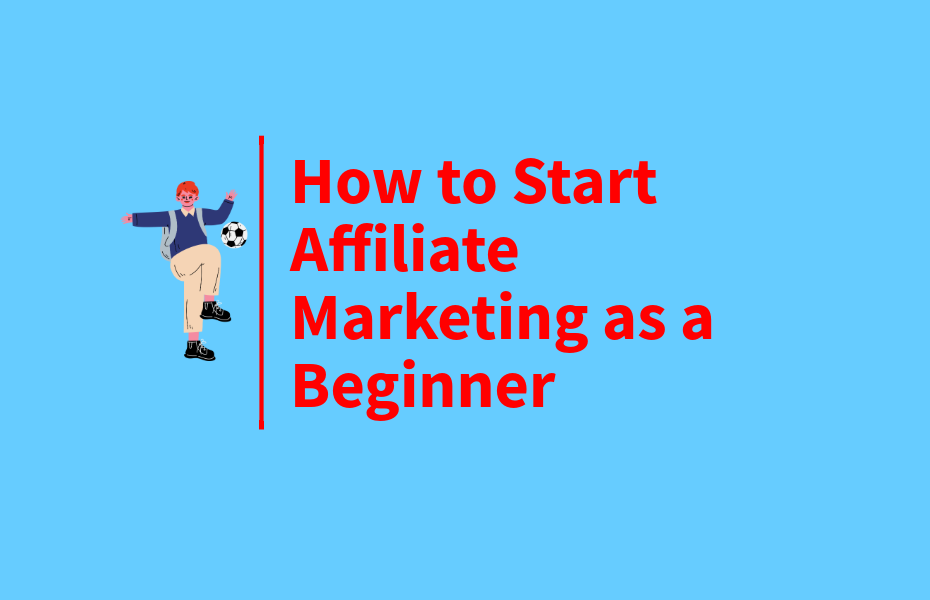Affiliate marketing is one of the easiest ways to make money online, even if you’re a complete beginner. By promoting products or services and earning a commission on sales, you can create a passive income stream that grows over time.
But how do you start? What are the best strategies to succeed? In this guide, we’ll cover everything you need to know about starting affiliate marketing as a beginner, including the best programs, tools, and step-by-step strategies to earn your first commission.
What is Affiliate Marketing?
Affiliate marketing is a performance-based model where you earn a commission for referring customers to a company’s product or service.
✅ How Affiliate Marketing Works:
1️⃣ You sign up for an affiliate program (e.g., Amazon Associates, ShareASale).
2️⃣ You get a unique affiliate link to share with your audience.
3️⃣ Someone clicks your link and makes a purchase.
4️⃣ You earn a commission (a percentage of the sale price).
📊 Fact: The affiliate marketing industry is expected to reach $15.7 billion by 2024 (Statista).
👉 Related Article: Best Affiliate Programs for Bloggers in 2024
Step 1: Choose a Profitable Niche
Your niche determines what products you promote and your audience.
✅ Best Niches for Affiliate Marketing:
✔ Technology & Gadgets – Laptops, software, web hosting.
✔ Health & Fitness – Supplements, workout gear, meal plans.
✔ Personal Finance – Budgeting tools, investing courses.
✔ Blogging & Digital Marketing – SEO tools, online courses.
💡 Pro Tip: Choose a niche you’re passionate about and one that has high-paying affiliate programs.
🔗 External Resource: How to Find a Profitable Niche (Neil Patel)
👉 Related Article: How to Choose the Right Affiliate Products for Your Blog
Step 2: Join Affiliate Programs
📌 You need to sign up for an affiliate program to start earning commissions.
✅ Top Affiliate Programs for Beginners:
| Program | Best For | Commission Rate |
|---|---|---|
| Amazon Associates | Physical products | 1-10% |
| ShareASale | Various niches | Varies by merchant |
| CJ Affiliate | High-end brands | Varies |
| Impact | SaaS, eCommerce | High commissions |
💡 Example: A blogger in the travel niche can join the Booking.com affiliate program to earn commissions on hotel bookings.
🔗 External Resource: Best Affiliate Networks (HubSpot)
👉 Related Article: How to Find High-Paying Affiliate Programs
Step 3: Build a Blog or Website
While you can do affiliate marketing without a website, having one builds credibility and increases conversions.
✅ Steps to Set Up a Blog for Affiliate Marketing:
✔ Buy a Domain & Hosting – Use Bluehost or SiteGround.
✔ Install WordPress – The most popular blogging platform.
✔ Choose a Niche-Specific Theme – Keep it clean and professional.
✔ Create Essential Pages – About, Contact, Privacy Policy.
✔ Write High-Quality Content – Blog posts, product reviews, comparisons.
💡 Pro Tip: SEO-friendly content ranks better on Google, bringing free organic traffic.
🔗 External Resource: How to Start a Blog (WPBeginner)
👉 Related Article: How to Write Affiliate Product Reviews That Convert
Step 4: Promote Your Affiliate Links
📌 Your success depends on how well you promote your affiliate links.
✅ Best Ways to Promote Affiliate Links:
✔ Write Blog Posts – Tutorials, reviews, product comparisons.
✔ Use Email Marketing – Send personalized offers to your subscribers.
✔ Leverage Social Media – Share links on Instagram, Pinterest, Twitter, Facebook.
✔ Create YouTube Videos – Reviews, unboxings, tutorials.
✔ Run Paid Ads – Facebook Ads, Google Ads (advanced strategy).
💡 Example: A beauty blogger writes a detailed review of a skincare product, includes an affiliate link, and drives traffic via Pinterest and Instagram.
🔗 External Resource: Affiliate Marketing Promotion Strategies (Neil Patel)
👉 Related Article: How to Promote Affiliate Links Without Being Spammy
Step 5: Track Your Affiliate Sales & Optimize Performance
📌 Tracking helps you understand what’s working and what needs improvement.
✅ Best Affiliate Tracking Tools:
✔ Google Analytics – Track clicks from blog posts.
✔ Pretty Links – Shortens and manages affiliate links.
✔ ThirstyAffiliates – Advanced link management.
✔ Affiliate Program Dashboards – Check real-time commissions.
💡 Pro Tip: Test different strategies (CTAs, placements, content types) to see what generates the most conversions.
🔗 External Resource: Affiliate Marketing Tracking Guide (SEMrush)
👉 Related Article: How to Track Affiliate Sales and Commissions
Common Affiliate Marketing Mistakes to Avoid
🚫 Promoting Too Many Products – Stay focused on a niche.
🚫 Ignoring SEO & Organic Traffic – Google traffic converts best.
🚫 Not Disclosing Affiliate Links – FTC guidelines require transparency.
🚫 Using Spammy Tactics – Overposting links can lead to account bans.
🔗 External Resource: FTC Affiliate Disclosure Guidelines
👉 Related Article: How to Disclose Affiliate Links Properly
Final Thoughts
Affiliate marketing is one of the best ways to earn passive income online. By choosing the right niche, joining top affiliate programs, creating high-quality content, and using effective promotion strategies, you can build a profitable affiliate marketing business.
💡 Key Takeaways:
✔ Choose a niche that aligns with high-paying affiliate programs.
✔ Sign up for reputable affiliate networks like Amazon, ShareASale, and CJ Affiliate.
✔ Create a blog or website to establish authority.
✔ Promote affiliate links strategically via blog posts, social media, and email marketing.
✔ Track performance and optimize to increase conversions.
Now, start your affiliate marketing journey today and earn your first commission! 🚀

